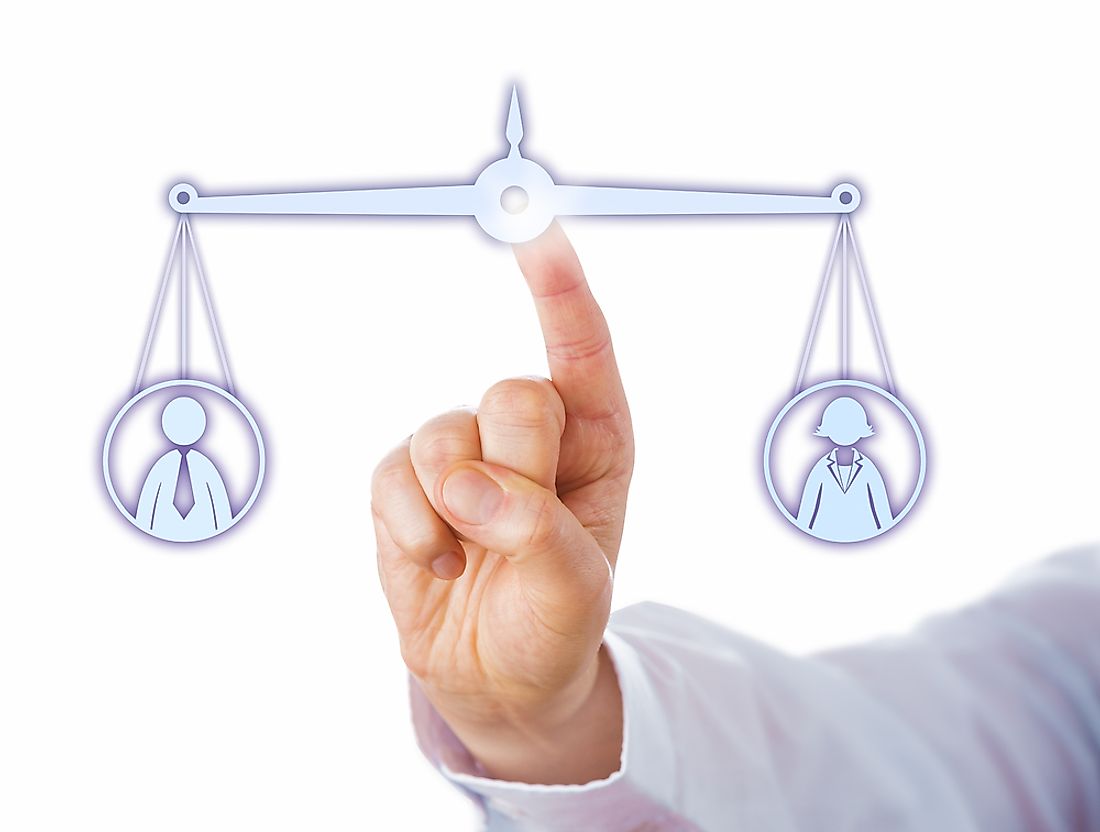Countries by Gender-Related Development Index

The United Nations Development Programme (UNDP) introduced GDI and the Gender Empowerment Measure (GEM) in its Human Development Report in 1995. The goal of the UNDP was to incorporate a gender-sensitive scope to the current Human Development Index (HDI). The GDI addresses gender-based gaps in education, life expectancy, and incomes. The GDI is on a scale of 0.000-1.000 with 0.000 being the lowest GDP while 1.000 being the highest.
Countries by Gender-Related Development Index
The country with the highest GDI is Sweden which has a GDI of 0.997. The next countries are Norway and the United States that have a GDI of 0.993. Other countries that have exhibited high GDP’s include Australia (0.978), Switzerland (0.974), Germany (0.964), Denmark (0.97), Singapore (0.985), and Netherlands (0.946). Also, Ireland (0.976), Iceland (0.965), Canada (0.983), Hong Kong, China (0.964), New Zealand (0.963), and United Kingdom (0.984) also have high GDIs.
Sweden is the world’s gender equality role model. Its government believes that gender equality has a significant role in shaping the society and people’s individual lives. Sweden has proven its gender equality goal. Currently, 12 out of the 24 government ministers are women. Furthermore, almost half of the representatives in the Swedish parliament are made up of women. Hence, Sweden is indeed modeling gender equality to the world. In its commitment to nurturing equality between the sexes, one of Switzerland’s goals is to achieve gender equality and promote empowerment of all girls and women. Accordingly, the number of women on the boards of the largest Swiss companies rose to 16% in 2016 from 13% in 2014. Denmark is also making substantial progress in gender equality. It is often known as the best country for women due to its free education, free health care, and a flexible parental leave policy. Germany is also among the most gender-sensitive societies. It is among the top world economies led by a woman Chancellor, Angela Merkel.
Controversies in the use of GDI
The first controversy is in its interpretation as an independent measure of gender gaps. The UNDP uses GDI alongside the HDI to measure gender equality. As such, interpretation of the GDI values should also be alongside the HDI. The second challenge is the unavailability of data in some countries for use in the calculation of GDI. As a result, lack of uniformity affects the comparability of data across nations worldwide. Thirdly, the life expectancy assumption made by GDI has been the subject of many heated debates. The assumption states that women will normally live five years more than men. The controversy is that if GDI is indeed a measure of equality, then the life expectancy should be equal for both males and females.
New proposals Regarding GDI
Due to the ongoing controversies regarding GDI, the UNDP proposes two gender-related indicators. The indicators are the HDI and the Gender Gap Measure (GGM). The HDI will measure separate male and female HDI while the GGM will replace the HDI and measure the gender inequality. Another proposal made in 2010 was Gender Inequality Index (GII) that is a measure of Reproductive Health, Labor Market Participation, and Empowerment.
Countries by Gender-Related Development Index
| Rank | Country | Score (2015, Source: UNDP) |
|---|---|---|
| 1 | Norway | 0.993 |
| 2 | Australia | 0.978 |
| 3 | Switzerland | 0.974 |
| 4 | Germany | 0.964 |
| 5 | Denmark | 0.97 |
| 6 | Singapore | 0.985 |
| 7 | Netherlands | 0.946 |
| 8 | Ireland | 0.976 |
| 9 | Iceland | 0.965 |
| 10 | Canada | 0.983 |
| 11 | United States | 0.993 |
| 12 | Hong Kong, China (SAR) | 0.964 |
| 13 | New Zealand | 0.963 |
| 14 | Sweden | 0.997 |
| 15 | United Kingdom | 0.964 |











